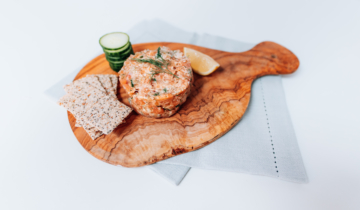Let’s get real, living our best glowing lives while also being gentle to our planet is not an easy task. Throw a global pandemic into the mix…and we have an even bigger problem. But hey, be kind to yourself – it’s a work in progress and taking small steps to living more sustainably is something we can and should all take part in. The best part? Sustainability is actually becoming more and more mainstream, so it’s not just for the woo-woos out there and is totally accessible.
In honor of Earth Day, here’s a little get-started guide with 5 simple steps you can start taking today:
Step 1: Time to VEG
Amp up those veggies in your diet, and reduce your meat consumption. Now, before you panic, realize that this does not mean everyone needs to be vegan. Are you a ‘Meatless Monday’ kinda gal? Try adding on another day or two. Are you already a pescatarian? Try eating fish and seafood one less day per week. If each of us minimize our animal product consumption, we will be bettering our planet by reducing greenhouse gas emissions and minimizing over-fishing and several other negative impacts on our oceans such as by-catch (when large fishing boats accidentally catch dolphins, whales, sharks and sea turtles while fishing and end up harming or killing them).
It can feel really overwhelming at times, when it seems there’s so many problems in the world. Rather than us taking a fear-induced approach, try empowering yourself by getting educated and then choosing to take 1 or 2 new steps each month. For instance, try throwing tofu, tempeh, or mock chicken in your bowls and salads, and play around with fun starchy vegetables like squash, sweet potato and turnips. Try to eat seasonally, since it will reduce the amount of carbon emissions caused by food transportation, plus it’s fresher and super fun to eat what’s in harvest! If you’re going to consume some meat and fish, be sure you know where it comes from. Seek local farms and small fisheries. This will ensure that animals are being treated well, and that there are no added antibiotics or hormones in the food you eat, both improving our planet’s well-being and your own.
Step 2: Less is more
Meeting up with a friend or grabbing an iced matcha latte on a sunny afternoon? Can you walk there or hop on your bike instead of jumping in the car? Swapping the car for walking or cycling even just one day a week makes a significant impact on our personal carbon emissions. Plus, hey, you’ll get a little extra movement and vitamin D that day. Once again, it’s a win-win situation! Using your car less isn’t the only thing to pay attention to; are you taking super long showers? Try shortening them by 1-2 minutes or taking a cold one. It’s better for your circulation, hair and skin anyway. Leaving lights on in rooms that nobody is in? Simply turn them off. Then, of course, there’s plastic. When you’re finished with the box of ziploc bags you have in your pantry, instead of buying new ones, try reusable zipper bags instead. I like a brand called Stasher. They have them in the cutest colours and you can easily pop them in the dishwasher after use. Same goes for parchment paper or aluminum foil – swap them for silicone mats for your cooking trays. Of course, we all know plastic bags are awful for the planet, so much, that some countries and cities are banning them. Remember to bring your reusable canvas bags with you when you do shop in stores or at the market. It can often feel that these little things are so small, but collectively, if we all do our part to use less, we can make a big impact.
Step 3: Before you checkout… think it over!
I know, I know, retail therapy, especially these days, is SO REAL. It’s so easy to just ‘add to cart’ from the comfort of our own beds, wearing our favourite onesie while watching The Circle…or is that just me? But in all seriousness, the more we consume, the more waste we create. Often clothing is only kept for a season or two, then it’s either donated or thrown out. Sadly, when we donate clothing, there’s often an overabundance thus many of the items end up in landfills regardless.
So when you are shopping, it’s important to think about whether you truly need something, or are you just buying it to fill a void – whether that’s living through a pandemic, being on your period, going through a break-up or dealing with a crazy boss. I get you, it’s a tough time and sometimes something new is so tempting, but try to snap out of that trance once you get to check-out, and assess the following:
- Do I really need it?
- Is this product super trendy or classic and timeless? (Try going for the latter)
- Does this item have a lot of plastic? If so – do your best to eliminate these purchases from your routine.
- Is the company I’m buying this from ethical and sustainable? (More on this later).
If it checks off all the right boxes, then treat yo’ self! If not, think about it a little more closely before you commit to the purchase.
Step 4: Closet Cleanse
On the topic of our closets, it may be time to cleanse them out. Now, as per step 3, this does not mean throwing everything out and buying a whole new wardrobe. In fact, it’s about creating a more cohesive and classic wardrobe that actually suits your lifestyle, vibe and colour scheme.
Where to start? Think about the colours that suit you and you gravitate toward. Choose 3-4 neutrals (think black, white, beige, grey, cream, charcoal) and 3-4 accent colours (olive green, mustard, blush pink, seafoam, navy, terracotta, lilac – just to name a few). You want the majority of your wardrobe to have staple pieces in those neutral tones, so it’s easy to mix and match, while throwing in some accent pieces with the colours that bring your outfit to life, while staying true to your vibe and the tones that suit you best. For example, I tend to like beiges and whites and light greys, and I typically throw in olive green, mustard, seafoam and light blue as accent colours, as they compliment my skin tone and eye colour. 90% of your wardrobe should reflect this, with a few fun pieces here and there for that tropical vacation or special occasion. That way, you can easily use the items you have for a variety of outfits, swapping out some accessories or a cute jacket to change it up.
For years, I thought outfit repeating was basically a sin – now I realize it’s not only nice to wear the things that you’re comfortable in and know you can rock, but also it’s the sustainable thing to do! Once you’ve cleansed your closet, try to invite some friends to come pass by and see the pieces you’re thinking of getting rid of. Some of your pre-loved items might feel overdone to you, but a friend can give them a second life. For the pieces that don’t make the cut, feel free to donate them to a reputable second-hand store or donation centre. For items that are stained or torn, use the fabric to wrap a gift for Mother’s Day, a birthday, or the holiday season. The Japanese practice of Furoshiki uses cloth or fabric to beautifully wrap gifts which creates less waste, plus you’ve just levelled up on your gift-giving.
Step 5: Support Companies that Care
We all spend money – whether that’s on products or experiences, it is essential to keep our economy healthy… but why not make solid decisions on how we spend our money? Whether you’re looking for a new skincare routine, buying a new pair of shoes or deciding where and how to travel, do some research on the company you are purchasing from.
It’s simple- if the brand’s website has a sustainability section, read up on it! If they don’t, chances are they’re not doing much. Companies are proud to share their efforts, both because of their love for the planet, and also for marketing reasons…I mean, why wouldn’t they want to share this with their customers? It influences others to do the same, while also sharing their impact on the planet, which makes more of us want to buy from them. Yet again, another win-win!
So what to do if a company doesn’t have an environmental/social impact? Before you simply ditch them, give them a chance. Send them an email asking gently about their efforts, and suggest some things they can do better. For instance, have a favourite restaurant that’s still using plastic straws? Let them know about compostable straws. If they’re willing to make a change, then hang in there. If not, kindly let them know that you’re looking to support companies that are bettering the planet, and chances are they’ll look into it (stat) as they want to keep their customers happy and abundant for the sake of their business.
Let this guide be a reminder that there is so much you can do to make the world a better place, and you don’t need to do it all at once. Start slow and most importantly, be gentle with yourself through this process. You will make mistakes; you will forget your reusable bag sometimes, you will have a takeout coffee with a non-compostable lid…it will happen and that’s okay. Sustainability is a journey, and it’s better for more of us to be living imperfectly sustainably, then very few of us to be living a zero-waste lifestyle. Remember, yes, it’s Earth Day – but truly, we need to be reflecting on the state of our planet all year long. But, hey, let’s start with today… What will you start doing to better our planet?
SHOP THE POST
_____________________________________________________________________________
Emily Padan, 2x entrepreneur and podcast host of @findingyourwave is on a mission to live a life with impact while creating imperfectly conscious businesses and hoping to inspire you to live as sustainably as you can all while being gentle and patient with yourself. The co-founder of @hintercompany hotel and the founder of @bloom.class, both of Emily’s companies plant trees for every booking, trying to green up the planet one tree at a time.







 No products in the cart.
No products in the cart.